The UK’s next-generation combat aircraft project has reached a major milestone, as the Ministry of Defence and its industry partners revealed the design of the new Combat Air Flying Demonstrator and confirmed that two-thirds of its structural weight is now in manufacturing.
Led by BAE Systems in partnership with Rolls-Royce, MBDA UK and the Ministry of Defence, the aircraft is the first crewed supersonic combat demonstrator developed in the UK in over 40 years. Its unveiling marks a key step in preparations for a first flight within the next three years.
The aircraft’s main structure, wings and tail fins are now being assembled using cutting-edge digital and robotic manufacturing at BAE Systems sites in Lancashire. The demonstrator is designed to test a wide range of technologies, including stealth-compatible features and next-generation flight controls.
“This significant and challenging project will deliver the UK’s first crewed combat demonstrator aircraft in four decades,” said Tony Godbold, Future Combat Air Systems Delivery Director at BAE Systems. “As well as developing a unique aircraft, we’re building the technical foundations, workforce readiness and digital maturity essential to deliver the next generation of combat air capability.”
The demonstrator is part of the UK’s contribution to the Global Combat Air Programme (GCAP), a trilateral partnership with Japan and Italy that aims to deliver a sixth-generation fighter aircraft by the mid-2030s. According to the Ministry of Defence, the demonstrator is essential for de-risking future aircraft development and ensuring Britain remains at the forefront of aerospace innovation.
“I am delighted that today, BAE Systems and the Ministry of Defence can share this important update,” said Richard Berthon, Director Future Combat Air at the MoD. “For the first time, people can see how this cutting-edge demonstrator aircraft will look when it takes to the skies.”
“The Combat Air Flying Demonstrator is providing invaluable lessons on future combat air delivery and equipping our people with the skills they will need to deliver GCAP.”
The project is also intended to significantly reduce the time and cost involved in building future military jets, through digital techniques such as model-based systems engineering, digital twins, 3D printing, cobotics and immersive simulation.
Pilots from BAE Systems, Rolls-Royce and the Royal Air Force have flown over 300 hours in a high-fidelity simulator built for the demonstrator. Engineers are using simulated flight trials to assess performance, test control systems and gather flight data well ahead of the aircraft’s first takeoff.
According to BAE Systems, this approach will help ensure the UK maintains its sovereign ability to design, build and support advanced military aircraft.
Since 2018, more than 1,000 apprentices and graduates have been recruited into the Team Tempest partnership. Over 600 suppliers from across the UK, including 91 small and medium-sized enterprises and 26 academic institutions, are contributing to the project. More than 100 organisations are currently working directly on the flying demonstrator, with a major concentration of activity in the North West of England.
The demonstrator is the UK’s first piloted supersonic combat air demonstrator since the Experimental Aircraft Programme (EAP), which paved the way for the Eurofighter Typhoon and first flew in 1986.


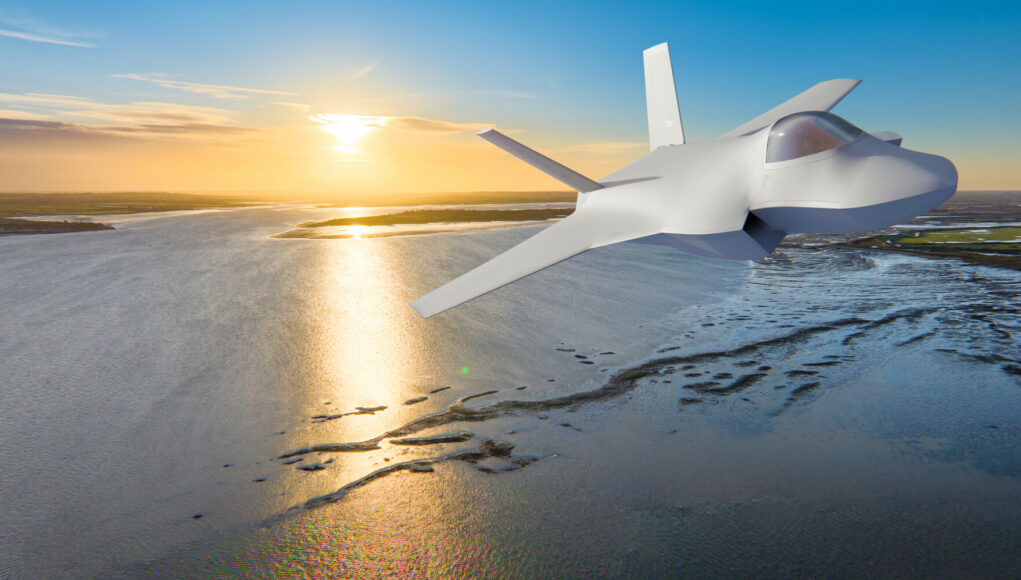
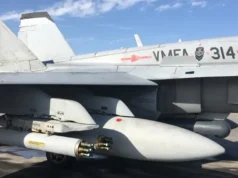

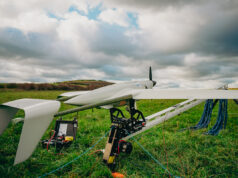
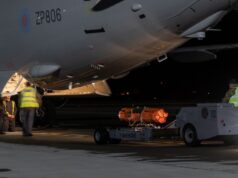
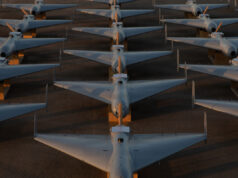
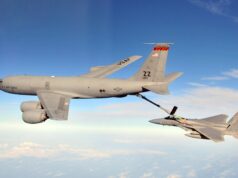
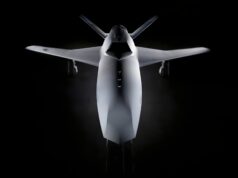

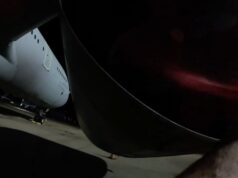
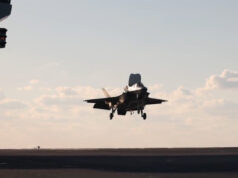

Great news. Keep it coming.
Steps in the right direction!
So the picture in the story is the design? Feels like a picture we’ve seen before?
Without a paint job!
What is cobotics?
Robots designed to cooperate with humans.
Unlike normal robots that have no ability to sense a soft squidgy human being a cobot can work along side a human without the risk of inadvertently ripping said human to pieces… something of an advantage on the recruiting front I would have thought.
For example, you know the automatic tailgates on cars these days? They have sensors so if they hit an obstruction while they are moving they stop very quickly. I got hit on the head by one of them once and was surprised how ‘gentle’ it was. Think of that as a simple example of the safety features needed for a cobot.
Cheers CR
Interesting, mate, had never heard of it.
Thank you.
I hadn’t either 🙂
A quick rummage online explained the basics, but I suspect it is rather more complex than I make out. It depends on the task being carried out. I suspect it will be quite complex tasks requiring human adaptability and problem solving, the sort of thing we do instinctively but robots can’t yet do. Another quick search and the results sound lot like the things that robots already do, so I am not clear on what the relationship is between the human and cobot activity…
I guess more will be clearer over time.
Cheers CR
So this is the Tempest version of the EAP demonstrator… which ended up looking a lot like the Eurofighter. If this is the case, I have to say, it’s a bit disappointing. I’m getting TAI TF Kaan vibes.
On second thoughts, I think the angle in the image makes it look more ‘generic’ or F-35 like. Whatever it eventually looks like, it’s important to remember that this is probably a much bigger aircraft. Let’s hope they can make it affordable enough so we can buy lots of them and make it attractive in the export market.
TAI Kaan’s support and development were assisted by BAE Systems. This is a demonstrator, not a production prototype.
Hope springs eternal.
So the UK is making its own F-22?
Erm no, no tail planes and the wing is different. This doesn’t mean that the Tempest will end up in this design shape. A lot is to prove the manufacturing techniques
yada yada… same ol unimaginative shape and format.
What a twin engine stealth jet?
Form follows function dumbass 🙄🤡💩
Whatever, mouthy! I though they’d stopped village idiots commenting on this site…
Wings and stuff…
yada yada… no rebuttal.
Nope… no rebuttal. To me, the design is very similar to others. If I remember correctly, the F-22 was beset from the get-go with countless issue’s regarding control, the mix of complex materials along with many other issues, forcing costs higher and higher, including maintenance, having a colossal impact on the overall affordability of each aircraft.
You see a delta with a very different fuselage shape and call it identical to a conventional tailed monoplane?
From ahead some of the GCAP images (not this particular aircraft) do look like F22, but that is as likely to be because the true design is being concealed as it is to be the actual intended shape.
My first impression was that the CGI showed an aircraft surprisingly similar to the F-35! Only on closer examination do significant differences emerge, e.g. no tail planes.
Erm no, no tail planes and the wing is different. This doesn’t mean that the Tempest will end up in this design shape. A lot is to prove the manufacturing techniques As said above
In August they had 215 hours of sim time. And I think 50% of the aircraft by weight?
Looks alright for a demonstrator though. Nothing radical.
What do you want it to look like? No tail planes wings are different to F-22 and F-35. Is having all aspect stealth important (no tail surfaces). Who’s to say the F-47 has no tail? Problem is do you get rid of the tail to increase the cost (thrust vectored engines) or do you just make it stealthier but only lose a portion of flight command authority. As for the nose and Chine, you are limited what you can design because of the laws of physics in terms of supersonic flight and the return of radar waves caused by cylindrical shapes. Also if you go for a flatter profile with a chine your reducing the overall volume for engines/fuel/avionics/weapons load mostly all of these are cylindrical shapes. The most important aspect for this aircraft is weapons space, fuel load for range, advanced engines with adaptive fan ability, and sensor fusion with computing capacity. Radar is pretty much covered, unless they put additional radars in the wing roots like the SU-57 (S Band)
The big question is how are you going to evade a hypersonic air to air missile at 200 miles plus range. Turning away sharply or through low frequency stealth and trying not to be detected.
As the USAF is moving to radar tracking satellites and no doubt China will be soon the concept of low frequency stealth is probably no longer relevant. If the radar is beaming down on you from up above a B21 has a massive radar cross section and so will an F47 unless you make it a flying sphere. That’s not to say stealth is not important because it very much is as a way to prevent high frequency radars from obtaining a weapons track. I just do not see the worth in paying a fortune to avoid low frequency radar when satellites will be low frequency radar obsolete.
However high manoeuvrability will always be import in a fighter.
This tempest design looks about right to me, a very high degree of all aspect stealth without sacrificing speed, range and manuverability for it. In many ways it looks like a modernised F22 on steroids which is what I suspect the USAF would love to have instead of fannying around with a new super jet from America’s least reliable contractor.
We can expect Boeings PR machine to get to work the day the F47 is unveiled to tell everyone how Tempest isn’t really a 6th generation jet it’s only 5.5 gen as it doesn’t incorporate
“ If the radar is beaming down on you from up above a B21 has a massive radar cross section and so will an F47 unless you make it a flying sphere.”
I think you may have that back to front….?
I don’t think so, stealth aircraft are geometrically designed to deflect radar waves coming in from the front or the side. From above they are a giant flat reflector. The ability to spot stealthy aircraft is stated as one of the main reasons the USAF wants satellites for AWACS functions.
Something that is spherical would have a similar RCS from all directions.
All aspect stealth means exactly that. Its stealthy from all angles. Not just the frontal aspect. Id imagine B21 will be extremely stealthy.
Reply to Robert Blay
Well quite.
The point I was making that a large flat surface with appropriate RAM could well have low RCS.
The OP stated that a sphere would be more radar invisible which is not true…..we used to use spherical metal balls as calibrants on range back in the dark ages.
Hence the concave not convex nose that form the frontal radar return away from the point of incidence. As low frontal detection is critical to minimise response times using doppler radars.
From the previous articles it will control forward deployed drones. This will sit back in a safer position controlling the show by data link. I’m sure they can also push it forward when safe to do so. Obviously you will need to pay for the drones to do that and what’s the bet when the costs get spicy these will get dropped.
By all accounts this thing is pretty big in final form to carry lots of fuel. I guessing in a recognition of you point because tankers will become very vulnerable and Japan will need the range.
I thought from the podcasts that the RAF has done that the situation will be that Tempest is operating far further forwards than jets do at present, essentially roaming the enemy’s airspace unsupported.
The drones will then be used even further forwards where the risk from air defences is too great.
I imagine a whole bunch of Spear 3 will be used to clear the way through the front lines- Tempest might well be able to carry 12-18 internally.
Demostrators not necessarily becomes the production prototype.
While it is good for the UK image to have a demonstrator flying in 2027 I think we should ask is it worth while making a demonstrator in the modern age.
We know the plane will fly and the real work will be in system integration and development the final design will be very different. Is this just a way to delay the program and give BAE something to do.
Japan seems to think so
A flying demonstrator will help convince other nations that it’s going to actually happen. May lead to other nations coming aboard, especially if the French and Germans are still bogged down in squabbles.
Lesson from f35 is the desirability of having the software code. Any possible partner’s / customers will be considering that.
They’re not going to worry about the source code of something that they haven’t even seen fly… 🤦🏻♂️
I think that will be the big prize not having an American company slow walk us through updates.
Deliberately slow walk; should that be?
There was a Reuters article recently in which BAE stated that the window for other nations joining as core members is essentially closed.
Sensibly so.
If you add other nations to core then all the arguments about tech, work share etc are all reopened immediately just as it is settled. That really would blow progress off course.
Also most other nations don’t really have that much tech to offer. You end up spoon feeding UKIP to others who don’t have the background or teams to utilise it and then they have their own bright ideas.
There are some things that can only be ‘known’ 100% once the thing flies. There is then a platform to spiral other developments onto to derisk those. So there is a lot of value in the demonstrator even if it will just use modified RJ200 engines(?) etc
Anyway 2027 will be upon us quite soon.
It would be ill advised to build 6.0 plane when we never got beyond 4.0 to date. So much happens in 40 years! Some is regressive tel me.
Sales does seem to be the major driver.
Probably makes it harder to cancel as well.
100% correct.
I think Starmer is selling the jobs angle as justification for the increased defence spending to those in his party that are traditionally against it.
In the end the real world is the real world and a model is a model. Every model in existence is a simplification of the real world, so until it’s there and physically interacting you cannot know everything and predict everything.
Exactly, so having a demonstrator gives you real world data to caliberate your models giving you confidence in the software. Given that developers use software to develop software these days you can see that confidence is a potential issue especially given the challenges that the F-35 has encountered. Being able to fly a demonstrator and demonstrate the basic core control systems is a seriously good step forward.
At the end of the day engineers are people and being able to see and touch a physical object is a great help when trying to sort stuff out, even when trying to understand control software seeing physical outputs will help. Not only that, it exposes the development engineers to the challenges that will be faced by the maintenance teams as well – nothing like a skinned knuckle or two to ram home the need for maintenance to be considered from the outset.
Cheers CR
Japan have already produced a demonstrator. One of the reasons they joined with us and the Italians is because their demonstrator didn’t demonstrate. As I recall, when the UK and Japan were merely cooperating and before they fully joined forces in a single project, Japan was planning on another demonstrator before moving into production.
I’m wondering if the reference to “next generation flight controls” is an allusion to the use of blown-air/ active-flow control. BAE were testing this concept with the Magma drone eight years ago. Eliminating the need for flaps should improve the stealth signature.
It could be, they have been tinkering with this new flight control technology for years now.
It should greatly reduce complexity of the airframe if they can get it to work.
Looking forward to the first flight….
Hi, are there any aircraft currently flying with blown air/active flow control? Many thanks
I was wondering what happened with that, hopefully they will give it a go see how it works.
Blown flight controls are nothing new.
The Blackburn Buccaneer had blown leading edges, flaps, ailerons and tail surfaces I believe. It had a very highly loaded wing (small wing big load) for optimum low level flight performance i.e. it didn’t notice those pesky gusts at low level so much. However, achieving low speed controlled flight for landing on the RN’s light fleet carriers was a challenge which was met by bleeding hot air from the engine compressors over pretty much every flight surface. Hence the huge split airbrake aft of the tail to allow the engines to be powered up on final approach.
Wonderful aircraft the Buccaneer…
Cheers CR
That’s correct but not what they are talking about. They are referring to systems that don’t have physical flight surfaces like flaps and ailerons, but instead push around the airflow by blowing air.
Thanks Grinch,
Interesting.
Cheers CR
BAC TSR-2 also had them.
Blown air INSTEAD of flaps, not augmenting them.
So related but not the same.
Where ?
That pic is not what I would expect as an official Design reveal, it just looks like the many other AI/CGI images we have seen for years.
Looks like a kid got hold of an iphone and found the crayon feature.
I think that is by design, to conceal as much as possible while giving away little.
Well that’s what I would expect but this headline ?
The GCAP lads and lasses didn’t write this headline dude.
Ermm, I know that, not sure what you are getting at, all I said was the Headline says “Unveiled” and it shows a CGI picture, so I’m asking where is the “Unveiling” ?
“Dude”? please Bro, I is English like init bro.
Blimey!looking at some of the comments anybody would think some people are unhappy we are actually DOING something🙄
Spot on. They could release full technical drawings with 3D models and someone would say your not telling us enough.
Blimey, looking at that comment anyone would think you just wanted to make an argument. 🙃🙃🙃🙃
Personally, i just think the picture doesn’t go with the headline.
Behave yourself😀
This forum is full of Private Frazers, plus a few Ruski trolls, who will rubbish any positive story and revel in bad news.
If we can integrate new and re-learned tech and lessons from this into our wider industrial base, as well as keeping the expertise gained into the coming decades, the UK could do very well from GCAP.
Good progress , wish HMG kept Typhoon production line open 🙄
Just paused not closed. Be back in action soon, nobody was laid off.
The Irish are probably ordering 24-Not; but they should do something as our nearest…..and with all that money.
There was a good article in The Guardian about the situation at Warton. BAE Systems don’t seem overly worried and seem to assume they will have further orders for Typhoon from Turkey, SA and Qatar to keep the line open for a decade
I still think Tempest should be a stealthy F-15 equivalent. So a fighter as shown, then a few years later, a long range strike version with a bigger wing, same but slightly higher bypass engines & a bigger weapons bay.
Most of what I have read/heard/seen so far suggests it is.
Bigger, longer range and stealthy, It’s the right combination right now.
No hook though !
And no strengthened undercarriage and fuselage to take the carrier landing loads. (No flair out when landing on a carrier, you just flying straight into the deck…)
Cheers CR
Good job it’ll have two lift fans then !
So it might look like this, or it might not. Either way it’s progress.
To my eye, that nose cone looks…..flattened. A bit
like a Duck billed Platypus.
Wasn’t F47s similar in their limited reveal?
It looks more like the very early images/plastic mock up of Tempest. Certainly the nose style. Not the prettiest. But the capability under the skin is what really counts. I expect the real thing will look pretty different from the image, Certainly in the detail. The cockpit shape looks pretty cheap CGI. And I’m sure the production standard Tempest will look different again from the demonstrator. Either way.Its progress. And I’m excited to see the real thing one day.
Absolutely mate.
Agreed. In my conversation at RIAT (not this year’s) with someone working on the project, he said the plastic concept mock up being shown to kids was nothing like the real thing when it flies operationally-his words.
Any information about Tempest being able to use road bases i.e. dispersed operation?
They’ll have to fix all the potholes first. 😁
Did anybody else read about the furore last week over reports in both the German publication Hartpunkt and Reuters?
Dassault and the French Government are seeking 80% of the workshare for Dassault despite both Germany, Spain & France paying equal shares.
Reuters quoted German lawmaker Christoph Schmid from the Social Democratic Party (SPD), who said it would be the last “nail in the coffin” for the project if the French press forward with their demand.
Is this the end of FCAS/SCAF?
Will the British & Italian project be the only 6th Gen game in Europe?
Fascinating to see the Franco-German collaboration implode in light of their exclusion of the Brits & Eyeties.
What’s the German for schadenfreude? Haha!
I believe in French it’s “joie maligne”.
Would it be the nail in the coffin, or would it just move ahead French only? Again.
Well that would be the end of the collaborative project that is FCAS and the commencement of a different project, if at all. The French certainly cannot afford to go it alone. If you believe the economy of UK is dire, it is considerably worse in France. With govt spending in the UK accounting for a whopping 45% of GDP it is considerably higher, at an unsustainable 60%, in France. UK debt/gdp is 96%. In France it is 116% and projected to be 120+% by 2030, without increased defence spending. They have no headroom. All the promises of increased defence spending in UK will be very difficult; in France impossible.
As for going it alone like they did with Rafale; did they really?
Rafale depends on a significant amount of US tech. Rafale itself relies on American auxiliary power units, lighting systems, fuel nozzles, wheel brakes and brake controls, transducer, electro-optical and passive electronic components, cabin systems, canopies, fuel tank sealants, corrosion inhibitors and various mechanical components and electrical power systems. Take away the US tech from Rafale and the plane would literally fall apart. So not exactly an independently developed sovereign fighter as claimed.
Whether France could produce the Rafale without American inputs remains highly questionable, but it is almost certain that without technologies and components from elsewhere in Europe it would be impossible.
It’s also too expensive and inferior to what US, Russia, and maybe China can offer. India cancelled it’s order for 128 Rafale, after the 1st batch of 36, in favour of the Russians. Rafale is the slowest fighter in the Indian AF and has lowest ceiling and the least powerful engine. It’s performance against Pakistan was not great. Not to mention the corruption investigation with the Indian govt refusing to cooperate with French prosecutors.
France offered Belgium significant financial incentives to buy Rafale; to pay back the cost to Belgium over 20 years in investment. Practically giving them away. Belgium still said no as it was still too costly for such an inferior fighter and then purchased F35As. This is why France blocked Belgium from joining the FCAS project. This came on top of Australia cancelling it’s French subs.
In conclusion, I doubt that France has the wherewithal, either technical or financial, to develop a 6th Gen fighter alone. Neither does Italy, Japan or the UK individually, but together……let’s wait and see.
Will Germany be one of the first customers for GCAP/Tempest?
With regard to blocking Belgium; that was initially. They were subsequently given observer status after France overcame their hissy fit.
Will we even have an experienced test pilot by then ?
Why shouldn’t we?
Of the top test schools, the ETPS at Boscombe Down is one.
Well that would be the end of the collaborative project that is FCAS and the commencement of a different project, if at all. The French certainly cannot afford to go it alone. If you believe the economy of UK is dire, it is considerably worse in France. With govt spending in the UK accounting for a whopping 45% of GDP it is considerably higher, at an unsustainable 60%, in France. UK debt/gdp is 96%. In France it is 116% and projected to be 120+% by 2030, without increased defence spending. They have no headroom. All the promises of increased defence spending in UK will be very difficult; in France impossible.
As for going it alone like they did with Rafale; did they really?
Rafale depends on a significant amount of US tech. Rafale itself relies on American auxiliary power units, lighting systems, fuel nozzles, wheel brakes and brake controls, transducer, electro-optical and passive electronic components, cabin systems, canopies, fuel tank sealants, corrosion inhibitors and various mechanical components and electrical power systems. Take away the US tech from Rafale and the plane would literally fall apart. So not exactly an independently developed sovereign fighter as claimed.
Whether France could produce the Rafale without American inputs remains highly questionable, but it is almost certain that without technologies and components from elsewhere in Europe it would be impossible.
It’s also too expensive and inferior to what US, Russia, and maybe China can offer. India cancelled it’s order for 128 Rafale, after the 1st batch of 36, in favour of the Russians. Rafale is the slowest fighter in the Indian AF and has lowest ceiling and the least powerful engine. It’s performance against Pakistan was not great. Not to mention the corruption investigation with the Indian govt refusing to cooperate with French prosecutors.
France offered Belgium significant financial incentives to buy Rafale; to pay back the cost to Belgium over 20 years in investment. Practically giving them away. Belgium still said no as it was still too costly for such an inferior fighter and then purchased F35As. This is why France blocked Belgium from joining the FCAS project. This came on top of Australia cancelling it’s French subs.
In conclusion, I doubt that France has the wherewithal, either technical or financial, to develop a 6th Gen fighter alone. Neither does Italy, Japan or the UK individually, but together……let’s wait and see.
Will Germany be one of the first customers for GCAP/Tempest?
Apologies!
Double post. Meant as a reply further up.
D’oh!
So, it’s basically the original mock up?
Don’t get excited..it will be cancelled..
Bet you’re a bundle of laughs at parties…
Just being realistic
Nothing realistic about spending billions on a project and then cancelling it. Yes it does happen (eg Nimrod) in a small % of cases but it won’t be happening this time for obvious reasons.
‘Realistic’ ‘Worst Case Scenario’
‘Realistic’ is not ‘Worst Case Scenario’
(Seems UKDJ doesn’t like people using greater-than / less-than characters 🤷🏻♂️)
I was thinking TSR-2